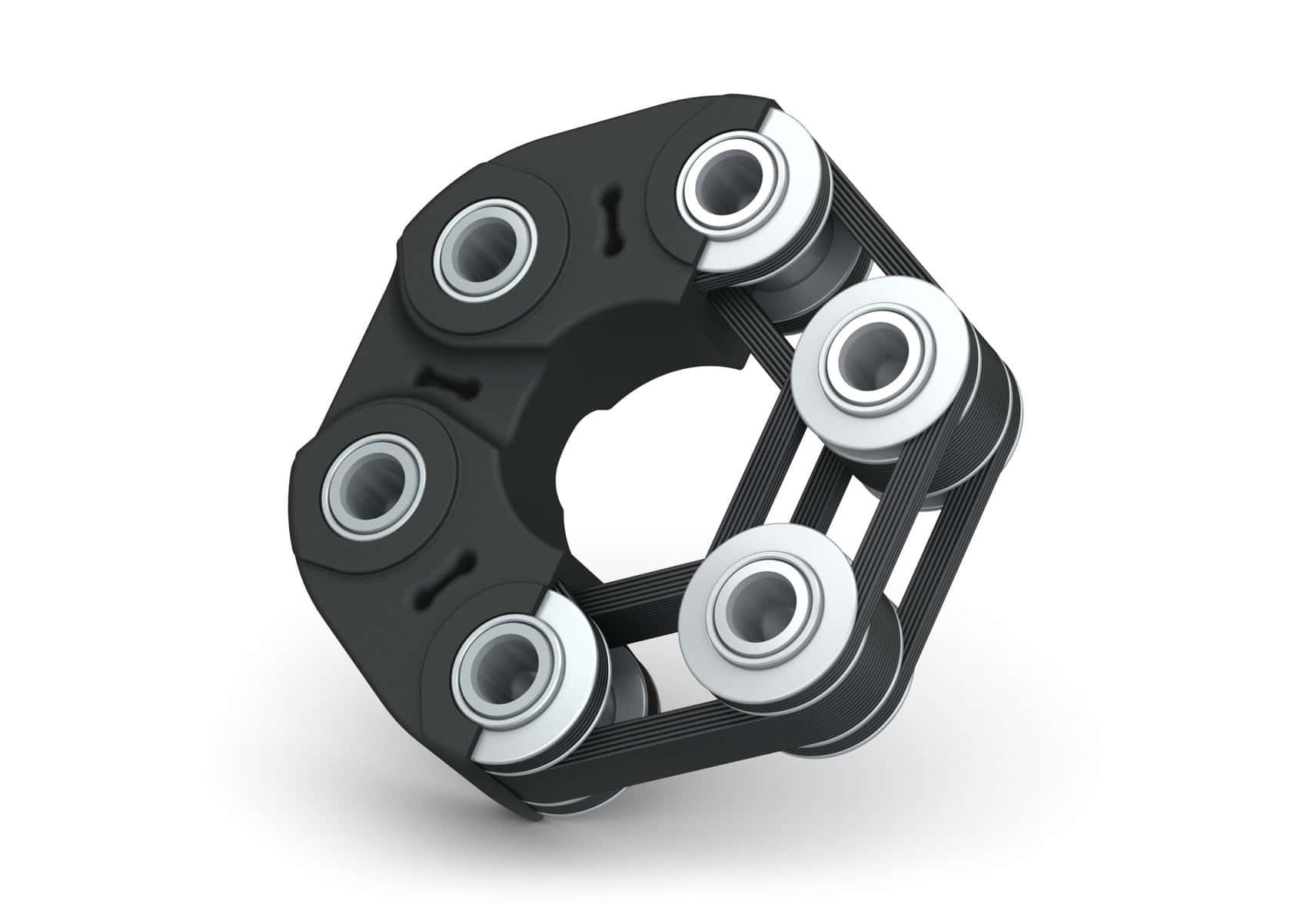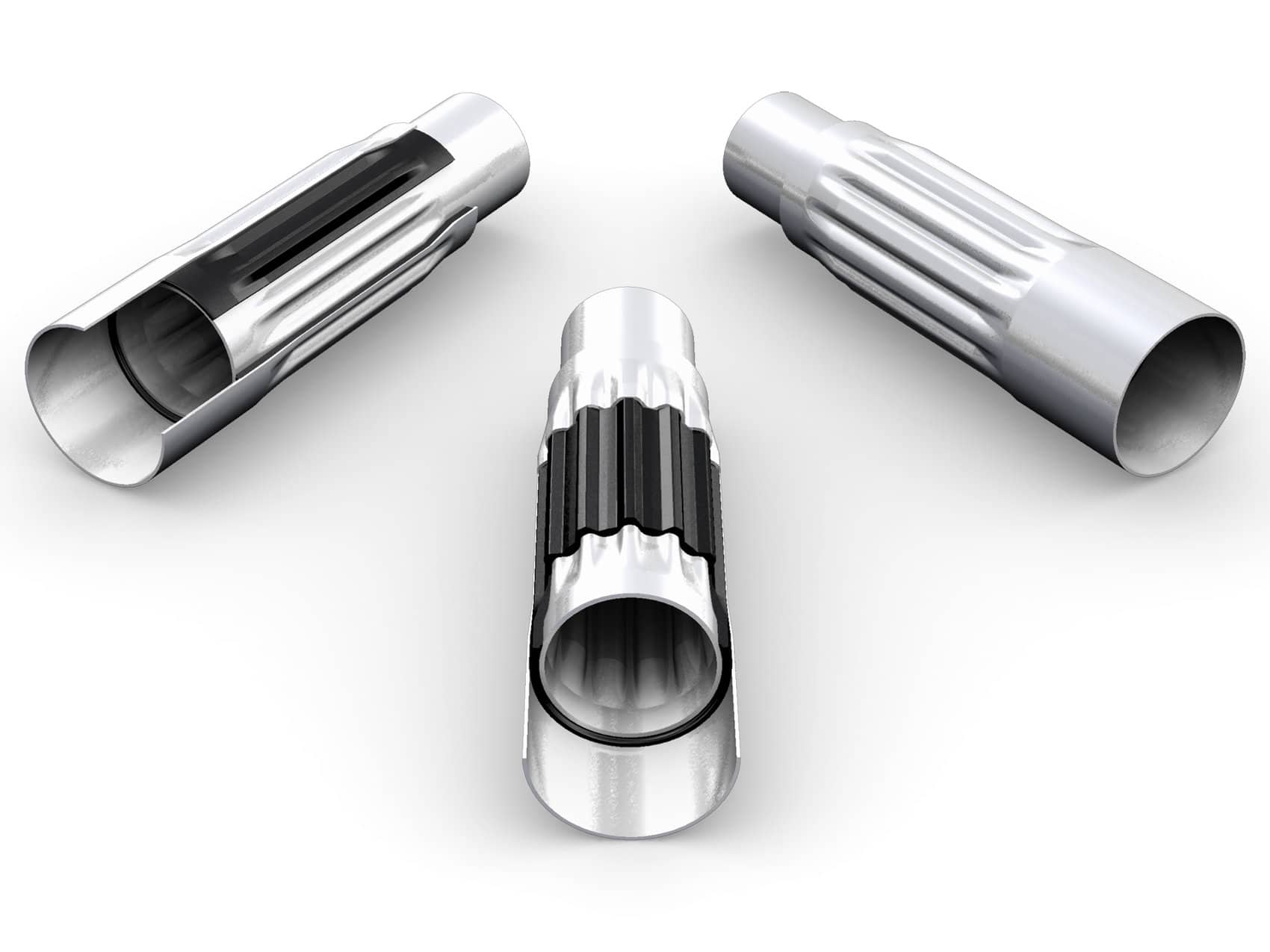Darmstadt, 21. September 2015 |
TrelleborgVibracoustic is developing new decoupling solutions for the drivetrain
TrelleborgVibracoustic, the world’s leading supplier of vibration control technology, is developing new decoupling solutions for rear-wheel and all-wheel drive vehicles. A cord-reinforced elastomer coupling offers advantages in terms of durability and weight in comparison to solutions available in the market. A tube-in-tube system takes the place of traditional flexible couplings and is perfectly suited for hybrid vehicles, for example, where installation space is tight due to the presence of the battery.
All-wheel drive vehicles are enjoying great popularity throughout the world due to their improved traction and off-road performance. If the engine is installed in the front, the drive force needs to be transferred to the rear axle by means of a prop shaft, similar to rear-wheel drive vehicles. This is subject to very high demands – at speeds of 125 mph, it rotates around its own axis up to 5,000 times per minute. The torsional vibration occurring in the engine is transferred to the prop shaft via the transmission. There it can have a disruptive effect in the form of airborne or structure-borne noise and vibration, and can even cause damage to the drivetrain in the long term. Typical symptoms are clunk noises, declutch bumps, and gear rattle noises.
Decoupling elements in the powertrain in the form of flexible discs often help. They isolate torsional vibration occurring at the prop shaft. They also harmonize the torque ramp-up and compensate the axial displacement and cardanic angle. TrelleborgVibracoustic is breaking new ground with the NRG-disc (New Rubber Generation Disc), a cord-reinforced flexible coupling. With specific cord packages for drive and overrun direction, the use of different cord types, optimized winding processes and rubber compounds, any desired springrate can be set in combination with special bushings to ensure axial force compensation. At 3°, the maximum cardanic angle is particularly high and therefore allows its application even in demanding installation situations. The coupling can be flexibly designed in terms of isolation and stiffness according to the customer’s requirements without a change of geometrical dimensions. The disc can also withstand the highest torsional torques and is significantly more durable than current series-produced solutions thanks to its specially developed components.
Using a tube-in-tube system, TrelleborgVibracoustic has succeeded in incorporating the functionality of a flexible coupling into a prop shaft with virtually no additional packaging requirements. This offers unprecedented levels of freedom with regard to packaging in vehicles with limited installation space (such as hybrid vehicles). With specific design customizations, the tube-in-tube unit can also be used as a crash element, absorbing energy in a well-defined manner in the event of an accident.
The prop shaft often has limited space around it, as it is positioned between the transmission and the rear axle differential, surrounded by the exhaust system and catalytic converters. These can raise the ambient temperature, particularly during the residual heating period while idling. As one of the most common requirements for future applications, the permissible operating and ambient temperatures are consequently in focus. The elastomer used is therefore subject to very high demands. The tube-in-tube system represents an economical solution to managing the conflicting objectives of durability at high temperature, packaging space and customer demands.


